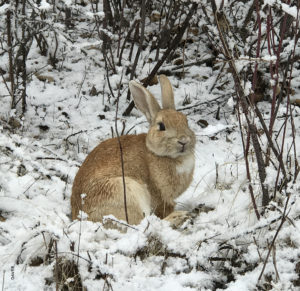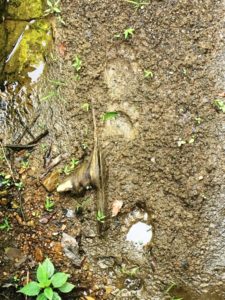By Bernheim
[metaslider id=”44386″]
 Bernheim is a haven for wildlife large and small. Even when we don’t encounter them directly, they often provide us with visual, auditory, and even olfactory clues that announce their presence. When our buildings reopen, be sure to check out the Wildlife Viewing Room located in the Education Center. While the most common creatures observed there are birds, chipmunks, and rabbits, even raccoons sometimes pay a visit. There is also an observation honeybee hive inside this room and active beehives in the wildlife yard just outside this room.
Bernheim is a haven for wildlife large and small. Even when we don’t encounter them directly, they often provide us with visual, auditory, and even olfactory clues that announce their presence. When our buildings reopen, be sure to check out the Wildlife Viewing Room located in the Education Center. While the most common creatures observed there are birds, chipmunks, and rabbits, even raccoons sometimes pay a visit. There is also an observation honeybee hive inside this room and active beehives in the wildlife yard just outside this room.

Active Purple Martin colonies can be found during their breeding season, near the parking lot below the Education Center and in the Edible Garden. Around Lake Nevin, the Olmsted Ponds, and other bodies of water, you might find dragonflies and damselflies darting about. If you look closely at the vegetation at the water’s edge, you can often find the molts from the nymphs of these of Odonates (the order to which dragonflies and damselflies belong).

If you are at Bernheim early in the morning or at dusk, a good place to find deer is in the Sun and Shade area. The flute-like calls of the Woodthrush add a plaintive song to our wooded trails, especially in the morning and evening. Every location and habitat at Bernheim will reward patience and keen observation with new discoveries. Nearly 50 species of mammals, including Black Bear (last confirmed sighting in 2016) have been found at Bernheim.
What to Observe and Questions to Ponder at Bernheim
Find a quiet trail or area and stand or sit very still. What animal signs do you notice (see, hear or smell)?

Did any creatures come into focus around you? Have you ever found yourself being studied by a wild animal? Try looking at things from different perspectives. What do you notice when let your focus go soft? Does moment catch your eye? Have you ever wondered why some animals have eyes on the front of their heads and other on the side of their heads? Tracks are an important signs of animals, but so too are half-eaten nuts and seeds. Remember some animal signs are castoff things like feathers, snake skin, bits of fur or feathers, egg cases, shells, and shed antlers. You can learn a lot about an animal by studying its scat (biologists fancy word for poop). Have you ever wanted to be a scatologist?
Links to Learn More:
Wildlife at Bernheim
Hidden Wildlife at Bernheim
